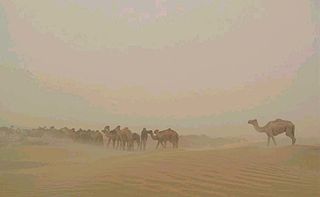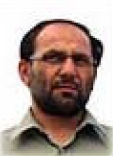Related Research Articles

Communications in Afghanistan is under the control of the Ministry of Communications and Information Technology (MCIT). It has rapidly expanded after the Karzai administration was formed in late 2001, and has embarked on wireless companies, internet, radio stations and television channels.

The economy of Afghanistan is listed as the 147th largest in the world in terms of nominal gross domestic product (GDP), and 127th largest in the world in terms of purchasing power parity (PPP). With a population of around 41 million people, Afghanistan's GDP (nominal) stands at $7.43 billion as of 2024, amounting to a GDP per capita of $200. Its annual exports exceed $1.2 billion, with agricultural, mineral and textile products accounting for 94% of total exports. The nation's total external debt is $8.0 billion as of 2024.

Logar is one of the 34 provinces of Afghanistan located in the eastern section of the country. It is divided into 7 districts and contains hundreds of villages. Puli Alam is the capital of the province. As of 2021, Logar has a population of approximately 442,037 people, most of whom are ethnic Pashtuns and Tajiks.

Nimruz or Nimroz is one of the 34 provinces of Afghanistan, located in the southwestern part of the country. It lies to the east of the Sistan and Baluchestan Province of Iran and north of Balochistan, Pakistan, also bordering the Afghan provinces of Farah and Helmand. It has a population of about 186,963 people. The province is divided into five districts, encompassing about 649 villages.

Maidan Wardak or Wardak, also called Wardag is one of the 34 provinces of Afghanistan, located in the central region of Afghanistan. It is divided into eight districts and has a population of approximately 500,000. The capital of the province is Maidan Shar, while the most populous district in the province is Saydabad District. Wardak is known for one of its famous high peak mountain known as.

.af is the Internet country code top-level domain (ccTLD) for Afghanistan. It is administered by AFGNIC, a service of the UNDP. As of 26 August 2020, .af was used by 5960 domains.

The Ministry of Defense is the cabinet ministry of Afghanistan responsible for overseeing the military of Afghanistan. The ministry is located in Kabul.

Mes Aynak, also called Mis Ainak or Mis-e-Ainak, was a major Buddhist settlement 40 km (25 mi) southeast of Kabul, Afghanistan, located in a barren region of Logar Province. The site is also the location of Afghanistan's largest copper deposit.

Afghanistan has three railway lines in the north of the country. The first is between Mazar-i-Sharif and the border town of Hairatan in Balkh province, which then connects with Uzbek Railways of Uzbekistan. The second links Torghundi in Herat province with Turkmen Railways of Turkmenistan. The third is between Turkmenistan and Aqina in Faryab province of Afghanistan, which extends south to the city of Andkhoy. The country currently lacks a passenger rail service, but a new rail link from Herat to Khaf in Iran for both cargo and passengers was recently completed. Passenger service is also proposed in Hairatan – Mazar-i-Sharif section and Mazar-i-Sharif – Aqina section.

Mining in Afghanistan was controlled by the Ministry of Mines and Petroleum, prior to the August 15th takeover by the Taliban. It is headquartered in Kabul with regional offices in other parts of the country. Afghanistan has over 1,400 mineral fields, containing barite, chromite, coal, copper, gold, iron ore, lead, natural gas, petroleum, precious and semi-precious stones, salt, sulfur, lithium, talc, and zinc, among many other minerals. Gemstones include high-quality emeralds, lapis lazuli, red garnet and ruby. According to a joint study by The Pentagon and the United States Geological Survey, Afghanistan has an estimated US$1 trillion of untapped minerals.

Arsala Jamal was an Afghan government official, who served as governor of the provinces of Khost and Logar in Afghanistan. He was assassinated in a bomb attack in Logar province of Afghanistan on 15 October 2013.

Bādghīs is one of the thirty-four provinces of Afghanistan, located in the northwest of the country, on the border with Turkmenistan. It is considered to be one of the country's most underdeveloped provinces, with the highest poverty rate. The capital is Qala e Naw, while the most populous city and the district are Bala Murghab. The ruins of the medieval city of Marw al-Rudh, the historical capital of the medieval region of Gharjistan, are located in the province near the modern city of Bala Murghab.
There are 26 government ministries in Afghanistan.
The Mes Aynak mine is a large copper mine located in the east of Afghanistan in Logar Province. Mes Aynak represents one of the largest copper reserve in Afghanistan and in the world having estimated reserves of 690 million tonnes of ore grading 1.65% copper.

Saving Mes Aynak is a 2014 independent documentary film, directed, produced, shot and edited by Brent E. Huffman. It was produced out of Kartemquin Films, the landmark Chicago-based documentary house, along with producer Zak Piper.

Brent Edward Huffman is an American director, writer, and cinematographer of documentaries and television programs, including Saving Mes Aynak (2015). His work has been featured on Netflix, Discovery Channel, The National Geographic Channel, VICE, NBC, CNN, PBS, Time, The New York Times, Al Jazeera America and Al Jazeera English and premiered at International Documentary Film Festival Amsterdam (IDFA), and many other U.S. and international film festivals. He is also a professor at the Medill School of Journalism at Northwestern University where he teaches documentary production and theory.
Nasir Ahmad Durrani is an Afghan politician who is also the former Minister of Agriculture, Irrigation & Livestock. He was appointed as the acting minister of Agriculture by the President in September 2017, he assumed the position officially when he received a vote of confidence from the Afghan Parliament in December 2017. Nasir Ahmad Durrani has held various government positions since 2010.
Nargis Nehan is an Afghan former politician who served as the acting Minister of Mines, Petroleum and Industries.
Maulvi Shahabuddin Delawar is an Afghan senior leader of the Taliban and Islamic scholar. Delawar is the Minister of Minerals and Petroleum of the Islamic Emirate of Afghanistan since 23 November 2021. He was a founding member of their negotiating team based in Qatar, arrived there in January 2012. He served as ambassador to Pakistan and Saudi Arabia under the Taliban government. He also served as Consul General at the Afghan Consulate in Peshawar.
The Xinjiang Central Asia Petroleum and Gas Company extracts liquid resources from the Earth's crust. It is based in the People's Republic of China. In January 2023, it signed a $540 million three-year investment deal with the Taliban government of Afghanistan for extraction at Amu Darya basin, which forms a natural frontier between Afghanistan, Turkmenistan, Tajikistan, and Uzbekistan.
References
- ↑ "An Introduction to the Ministry of Mines and Petroleum | Ministry of Mines".
- ↑ "Home | Ministry of Mines". momp.gov.af.
- ↑ "Taliban Sign Multibillion-Dollar Afghan Mining Deals". Voice of America. August 31, 2023.
- ↑ "Mes Aynak | Ministry of Mines". www.momp.gov.af.
- ↑ "New Senior officials, Introduced to the Ministry of Mines & Petroleum - Bakhtar News Agency". June 11, 2022.